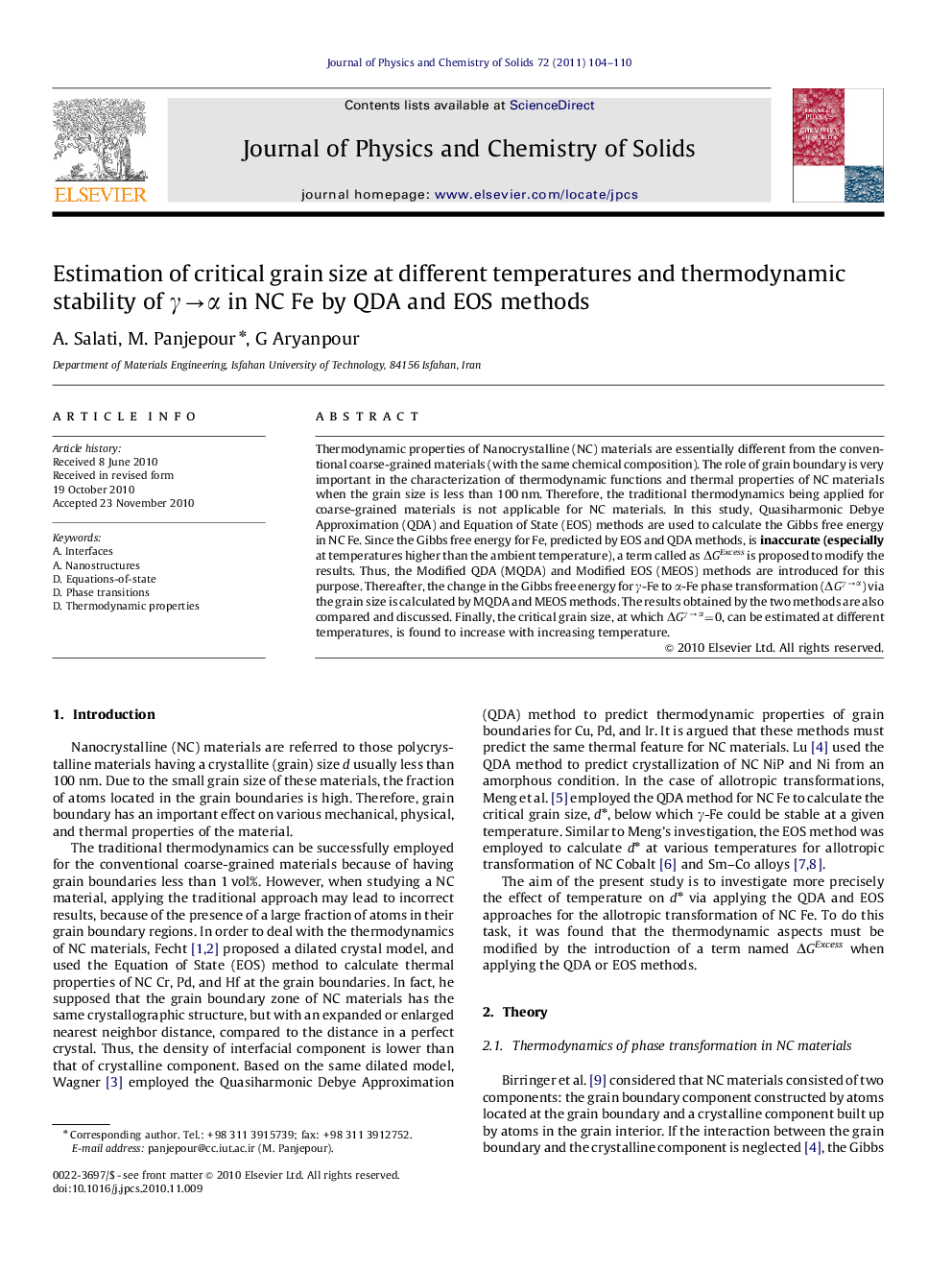| Article ID | Journal | Published Year | Pages | File Type |
|---|---|---|---|---|
| 1516549 | Journal of Physics and Chemistry of Solids | 2011 | 7 Pages |
Thermodynamic properties of Nanocrystalline (NC) materials are essentially different from the conventional coarse-grained materials (with the same chemical composition). The role of grain boundary is very important in the characterization of thermodynamic functions and thermal properties of NC materials when the grain size is less than 100 nm. Therefore, the traditional thermodynamics being applied for coarse-grained materials is not applicable for NC materials. In this study, Quasiharmonic Debye Approximation (QDA) and Equation of State (EOS) methods are used to calculate the Gibbs free energy in NC Fe. Since the Gibbs free energy for Fe, predicted by EOS and QDA methods, is inaccurate (especially at temperatures higher than the ambient temperature), a term called as ΔGExcess is proposed to modify the results. Thus, the Modified QDA (MQDA) and Modified EOS (MEOS) methods are introduced for this purpose. Thereafter, the change in the Gibbs free energy for γ-Fe to α-Fe phase transformation (ΔGγ→α) via the grain size is calculated by MQDA and MEOS methods. The results obtained by the two methods are also compared and discussed. Finally, the critical grain size, at which ΔGγ→α=0, can be estimated at different temperatures, is found to increase with increasing temperature.
Research Highlights► QDA and EOS methods are used to study the thermodynamics of nanocrystalline Fe. ► According to the calculated results, we find that these methods are inaccurate. ► To remove this inaccuracy, modified QDA and EOS are introduced. ► For thermodynamics study, the stability curves are plotted versus grain size. ► The changes of allotropic transition temperature with grain size are survived.
